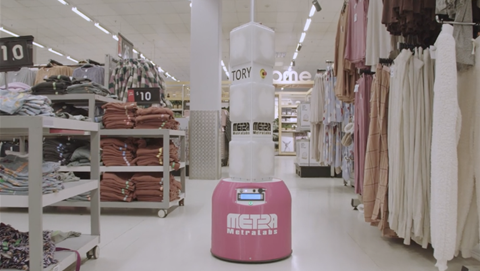The dual forces of big data and cheap, accessible compute in the cloud have combined to create a perfect storm for machine learning to develop and take over the world.

Right now, the world’s biggest software companies and leading IT shops are “training” their machines to go through huge data sets (both structured and unstructured) until they can see patterns and reach conclusions that were not programmed upfront.
The computers of the future will become expert at recognising patterns, predicting outcomes and answering questions not even asked.
But to be on right side of this disruptive force, CIOs need to start building plans right now for how they will make the most of machine learning tomorrow.
Robots in the mainstream
Machine learning, artificial intelligence and deep learning are already here in a big way.
The mysterious Google X division recently completed an R&D project which successfully taught 16,000 computers in a cluster to recognise an image of a cat based on the analysis of 10 million images taken from Youtube videos.
The only instruction was to look for patterns. The researchers did not program the machine to look for a cat, but it did exactly that.
Meanwhile, IBM is pushing Watson beyond the Jeopardy test. In March this year the IT giant acquired AlchemyAPI, a leading provider of machine learning technology, and is planning on integrating the technology into the core Watson platform.
On the household end of the spectrum is, of course Google Search, which learns all the time about how best to display search results. It works in unison with the virtual assistants taking over our smart phones - Siri, Google Now and Cortana – which become better and better the more they are used.
We have advanced facial recognition from companies like Facebook, and even Netflix, which only recently launched in Australia, is using simple machine learning to predict what we might want to watch.
Even though machine learning has clearly broken through into the reality of our day-to-day lives, the consumer perception that artificial intelligence or machine learning might go too far and create the Hollywood-style “killer robots” of the future persists.
I doubt any Australian company has this specific goal in their business plans, but this perception needs to be treated as a genuine and legitimate concern and we, as business and technology leaders, need to be very careful about how far we go.
We need to strike a balance between enabling machine learning to help make our lives better while ensuring we don't create a Frankenstein’s monster that cannot be controlled.
The time to prepare is now
Machine learning and AI has a lot to offer Australian business, be it financial planning services in the banking sector, weather predictions for insurance companies, or the creation of personalised services tailored to a consumer’s behaviour in retail.
While it is still early days, large corporates should be exploring how the advent of machine learning will impact their particular industry now.
CIOs need to start building a strategy to both deal with the impact of machine learning as well as devise ways to leverage the opportunity it presents. They then need to partner with specialists in this field and carefully invest in the space.
My advice is not to try to boil the ocean as the field is still developing. Start with smaller, pragmatic projects that leverage machine learning solutions which have already matured, such as predictive analytics and simpler pattern recognition.
The real difficulty will be in implementing the capability. Developing machine learning solutions can be complex and time consuming.
Thankfully this complexity has seeded a whole new marketplace of vendors who offer machine learning capabilities as-a-service. This is a great place to start tinkering. It will be easier, quicker and all at fraction of the cost of doing it in house.
There is also the opportunity for progressive corporates to look at the potential of investing in disruptive businesses to capture growth opportunities in the machine learning industry.
An insurance company for example might invest in a business that is building machine learning capability and move on to provide broader services to the industry rather than just its own organisation.
Machine learning is a reality. Our computers of the future will become expert at finding patterns and predicting outcomes. While it is still in its infancy, now is the time for large corporates to find real ways to leverage this trend for the benefit of our customers and shareholders.



_(20).jpg&h=140&w=231&c=1&s=0)
.png&h=140&w=231&c=1&s=0)





_(26).jpg&w=100&c=1&s=0)

 iTnews Executive Retreat - Security Leaders Edition
iTnews Executive Retreat - Security Leaders Edition












_(1).jpg&h=140&w=231&c=1&s=0)



